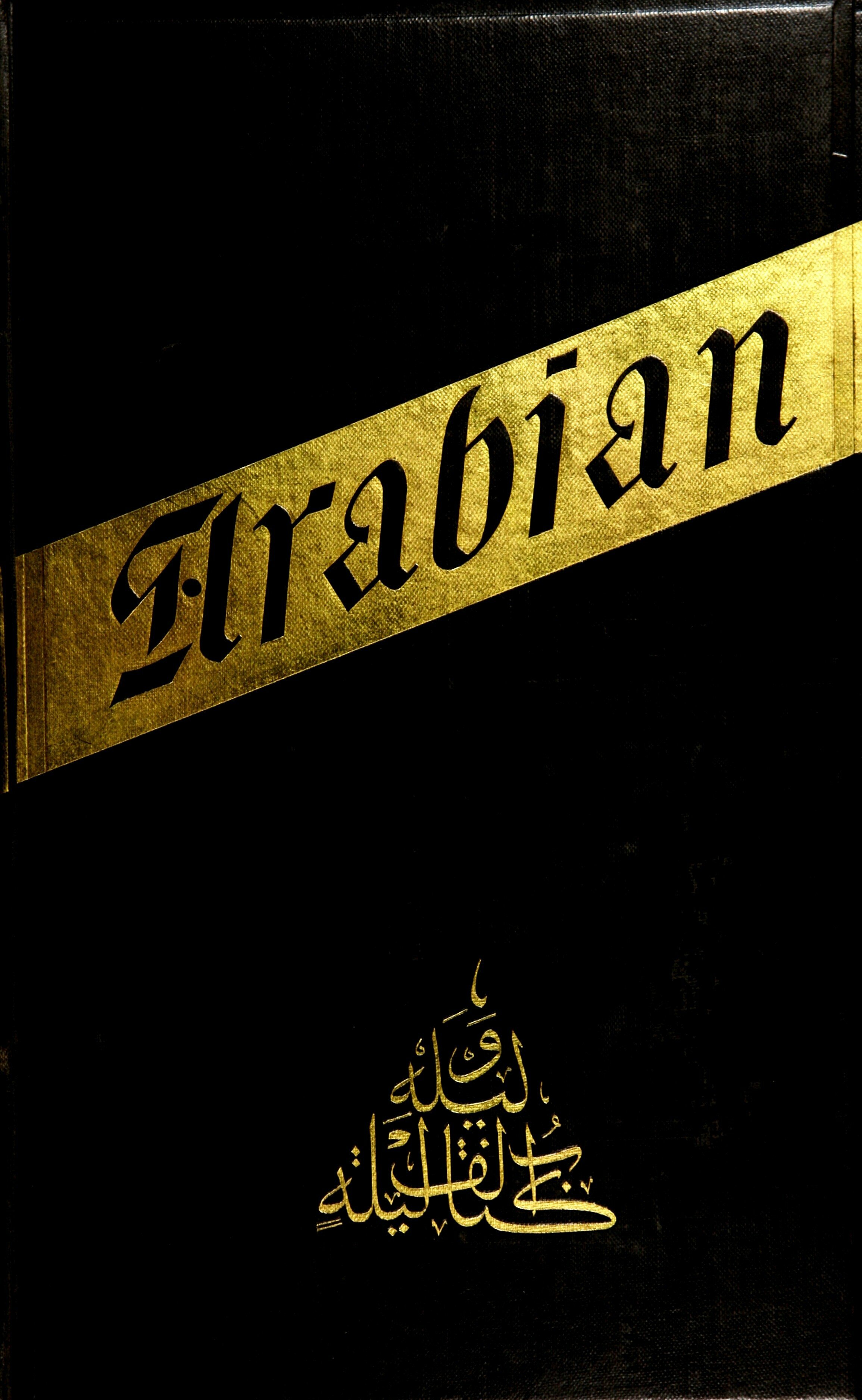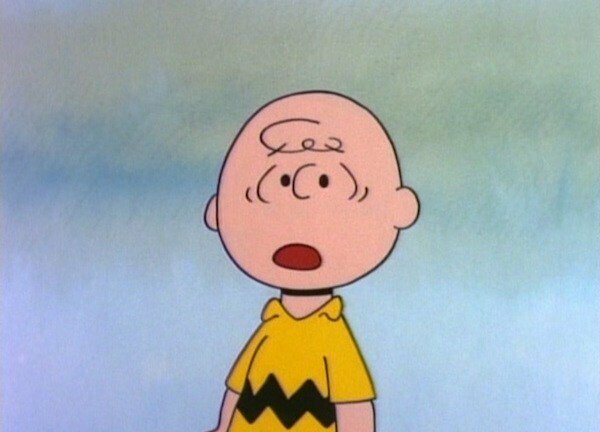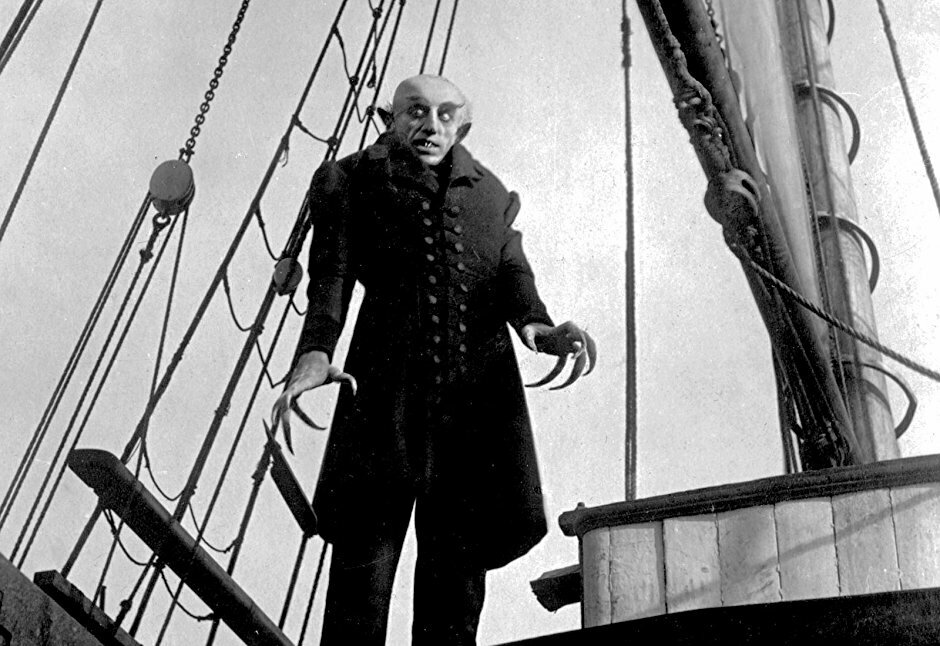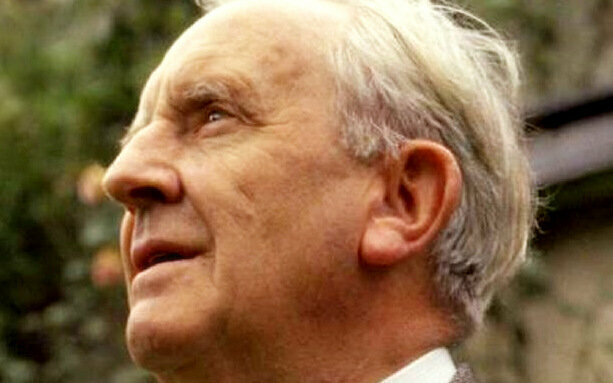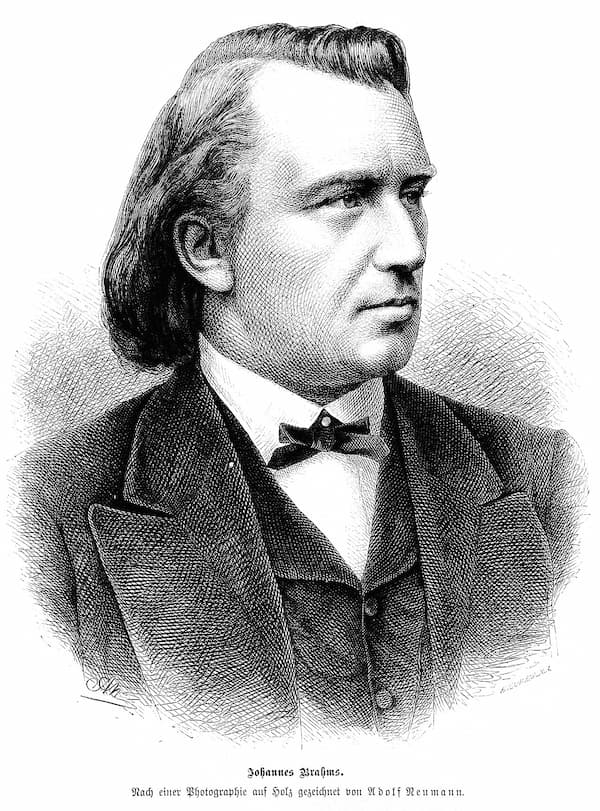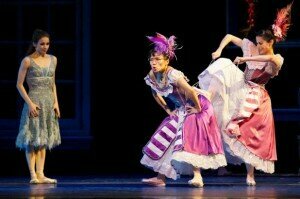
Cinderella and her Two Step-Sisters (San Francisco Ballet, 2013)
Composers have taken up those stories and made everything from ballets and musicals to small set pieces. Let’s see who’s made it into music!
English composer Eric Coates wrote three fantasies for orchestra, the third of which was Cinderella. In this short 15-minute work, Coates starts with our heroine sitting sadly by the fire. Her Fairy Godmother arrives and everything is action: a dress, the coach, and Cinderella is off to the ball. She meets the Prince during the Waltz, runs off at midnight, is discovered by the Prince via her lost slipper, and then all live happily every after.
Coates: Cinderella (Slovak Radio Symphony Orchestra; Adrian Leaper, cond.)
On a very different level is William Alwyn’s Cinderella. Written in 1952 for a graded piano book, Cinderella is a graceful waltz in E major.
Alwyn: Cinderella (Ashley Wass, piano)
Sergei Prokofiev completed his Cinderella for the Kirov Ballet in 1944 and it was a success not only for its wonderful music but also the roles of the two step-sisters who are played as comic roles. In the Dancing Lesson and Gavotte, the two step-sisters attempt to learn how to dance before the ball, with humorous results.
Prokofiev: Cinderella Suite No. 2, Op. 108; II. Dancing Lesson and Gavotte (Ukrainian State Symphony Orchestra; Theodore Kuchar, cond.)
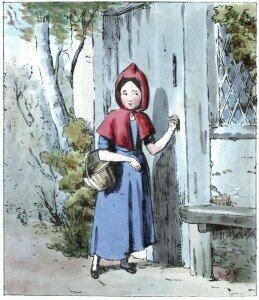
Little Red Riding Hood Knocking at Her Grandmother’s Door (1845)
American composer Seymour Barab wrote a number of children’s operas on fairy-tale themes, including Little Red Riding Hood, which takes great pains to show the actor playing the wolf getting on his makeup before the show so that the children won’t be frightened.
Barab: Little Red Riding Hood: Scene 1: The Wolf: I’m the Wolf (Herman Berisso, The Wolf)
Barab also wrote operas on Cinderella, Goldilocks, and The Pied Piper of Hamelin.
Sergei Rachmaninoff wrote two sets of piano study pictures, études-tableaux, and in 1929, the Italian composer Ottorino Respighi took 5 selected by Rachmaninoff and orchestrated them for the conductor Serge Koussevitzky for performance by the Boston Symphony Orchestra. Following the directions given to him by Rachmaninoff, Respighi titled the works and No. 3 is La chaperon rouge et le loup (Little Red Riding Hood and the Wolf).
Rachmaninoff: 5 Études-tableaux: No. 3. La chaperon rouge et le loup (Little Red Riding Hood and the Wolf) (Sydney Symphony Orchestra; Vladimir Ashkenazy, cond.)
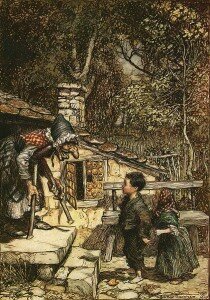
Arthur Rackham: Hansel and Gretel meet the Witch
Tchaikovsky: The Sleeping Beauty, Op. 66: (a) Chaperon Rouge et le Loup (Little Red Riding-Hood and The Wolf) (Slovak State Philharmonic Orchestra, Košice; Andrew Mogrelia, cond.)
In his opera Hansel und Gretel, Engelbert Humperdinck took the story of the two children who meet the witch with her enticing gingerbread cottage and created an opera with enormous appeal. One of the best-known songs from the opera, in English, is the dance between the two children.
Humperdinck: Hansel and Gretel: Act I Scene 1: In the Cottage: Brother dear, come dance with me (Susanne Mentzer, Hansel; Heidi Grant Murphy, Gretel; Milwaukee Symphony Orchestra; Andreas Delfs, cond.)
All of these musical settings help us see more deeply into the children’s stories we love.

